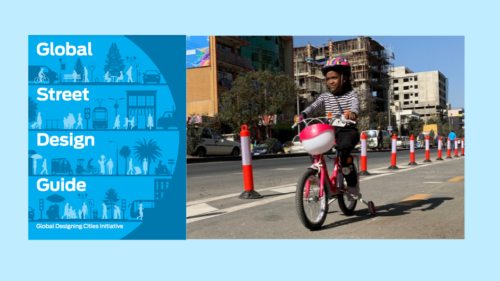
World Sustainable Transport Day: A Green Transition
Learn how we are helping cities create more cleaner, greener, streets and public spaces.
The World Health Organization (WHO) released the Global Status on Road Safety Report 2023 today, showing significant progress in many regions while also identifying pressing challenges.
Notably, there has been a 5% decrease in deaths caused by road crashes since 2010—and even more encouragingly, 35 UN Member States reported a 30-50% reduction between 2010 and 2021.
GDCI has been improving road safety since 2016 as part of the Bloomberg Initiative for Global Road Safety. Working with 18 cities in 11 countries in mostly low- to middle-income locations, GDCI provides design guidance, implements street transformation projects in which communities are integral to the design phase, and conducts capacity-building for urban designers, engineers, and planners.
[Learn how Fortaleza reduced road traffic deaths eight years in a row.]
However, making streets that prioritize the most vulnerable, including people walking and cycling, continues to be challenging. The report states that pedestrian deaths caused by road traffic crashes increased by 3% and cyclist deaths by 23%. Basic safety standards for pedestrians are lacking for a startling 80% of the world’s roads. Meanwhile, only 0.2% feature cycle lanes.
[Learn how GDCI is innovating cycling infrastructure in 10 selected cities in Africa, the Americas, Asia-Pacific, and Europe.]
Speed is the number one cause of road traffic deaths, yet streets designed for vehicles to move at safe speeds are still far from standard. According to the report, only four countries have national laws mandating their urban speed limits be set to the recommended 30km/h.
GDCI’s work focuses on designing streets that prioritize people, which starts with safety for all ages and abilities. Aligned with the safe systems approach, which advocates for a balance of public transit, cycling, and walking as forms of sustainable transport, GDCI’s award-winning guides and publications help city leaders and practitioners ensure streets are designed to reduce speeds to a safe level and cater to the most vulnerable road users, including young people, children, and their caregivers.
Another core area of GDCI’s work is supporting cities to adapt these guides and manuals to local contexts and apply them to create or update urban mobility policies.
GDCI is committed to reducing deaths and serious injuries caused by road crashes and working with more cities to achieve the ambitious goals outlined in the Global Plan for the Decade of Action for Road Safety 2021-2030.
Download GDCI’s award-winning guides and manuals for free, and to partner with GDCI, contact info@gdci.global.
Learn how we are helping cities create more cleaner, greener, streets and public spaces.
See how our Streets for Kids projects are helping more kids and young people get to school and play safely, while also creating comfortable, healthy, and enjoyable spaces for their caregivers and the wider community.
"The guidance, vision, and flexibility articulated in the Guide represents a new and important direction for cities and communities and is an indispensable tool for planning a more equitable future," says World Bank President Ajay Banga.

